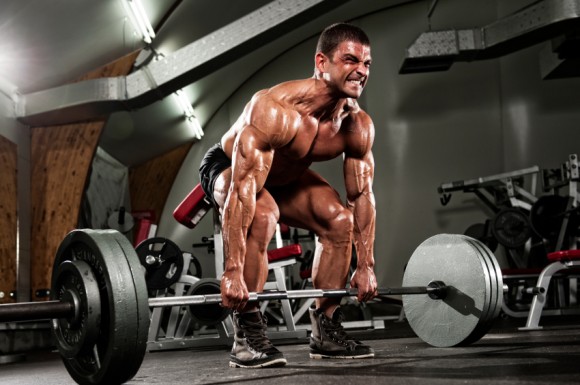Everyone wants bigger and stronger glutes, and most people love to train variations of the bench press. Sometimes you don’t have time to train both. Other times you just want a novel way to develop them. That’s where the bridge…


Everyone wants bigger and stronger glutes, and most people love to train variations of the bench press. Sometimes you don’t have time to train both. Other times you just want a novel way to develop them. That’s where the bridge…

As you program a strength and conditioning plan to prepare an athlete for competition or sport, it’s imperative to know the three types of strength preparation. In this blog, I’ll give a brief overview of each, as well as some…

Everyone wants better glutes, whether you’re a guy or gal, athlete or non-athlete. That’s because glutes that are awesomely developed not only make your body look better, but they can also drastically improve your performance. When the glutes are strengthened and…

 It’s never been easy to accurately determine the maximum amount of weight you can lift for one rep.
It’s never been easy to accurately determine the maximum amount of weight you can lift for one rep.
You either expend a ton of time and energy as you lift, rest, add weight, lift, rest, add/reduce the weight, etc. – judging, missing, and guessing your way throughout the haphazard journey. This cycle continues until you find a true one-repetition maximum (1RM). The process, at best, will take 15-20 minutes per exercise and it can be exhausting – literally and figuratively.
Or you perform a submaximal set to failure and plug your numbers into an equation that may, or may not, have been clinically tested. Furthermore, many indirect methods (i.e., submaximal lifts) that calculate a 1RM require you to fail at a specific rep, say, rep 10 or the calculation won’t work.
This week I decided to answer two questions I recently received from a reader. -CW
Chad, my dermatologist recommended that I stop using whey protein. However, I know you recommend it for pre- and post-workout nutrition. What should I do?
CW: First off, acne is primarily caused by excessive inflammation in the body. So anything that reduces inflammation can help clear up your skin. You can put every acne cream ever invented on your face and it still won’t work nearly as well as cleaning up your diet by adding anti-inflammatory foods such as fresh fruits and vegetables and wild fish.
So the question is: does whey protein increase inflammation? I believe that 99% of them do because the natural immune-boosting nutrients in whey have been destroyed through heating and acidification processes used in most whey protein powders. However, what if whey protein is manufactured the right way, thereby keeping the immune-boosters in tact? From what I’ve experienced with clients, a clean whey protein such as this one will probably decrease inflammation in most people.

Your body is comprised of around 206 bones. Unless you broke one of them at some point in your life, you probably don’t give much thought to any of them.
But bone physiology is important for any trainer or hard-training athlete to understand, so I’m going to cover the basics of what you need to know.
First off, bone isn’t a passive tissue that just maintains your uprightness and holds your soft tissues in place. Nope, bone is a living, adaptable tissue that’s classified as an organ. It can grow, repair and remodel, much like muscle tissue.

Most of us want to get bigger and stronger at the same time. But most guys or gals that follow a bodybuilding-style program aren’t building much strength. So today I’m going to outline a workout you can put in your…
Bret Contreras talks strength, muscle, and the 2 x 4 system.
 If I had to choose one upper body exercise for the rest of my training days it would definitely be the rope climb. Of course, we don’t live in a world where we’re relegated to only one exercise, but if I had to choose one that would be it. No other upper body exercise works as many muscles as intensely, from your abs to your forearms, and everything in between. However, the rope climb is an advanced exercise that might not be appropriate for many of you, at this point.
If I had to choose one upper body exercise for the rest of my training days it would definitely be the rope climb. Of course, we don’t live in a world where we’re relegated to only one exercise, but if I had to choose one that would be it. No other upper body exercise works as many muscles as intensely, from your abs to your forearms, and everything in between. However, the rope climb is an advanced exercise that might not be appropriate for many of you, at this point.
The people who run into a problem with the rope climb, whether it’s pain in the shoulder, elbow or anywhere else are usually not ready for such a challenging move. No matter how great the rope is, you must pass through the ranks before adding it into your program.
Eric Cressey stops by to discuss the four essential factors for determining exactly how you should train.